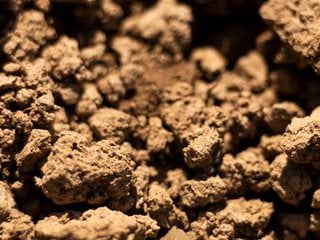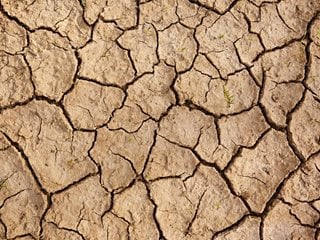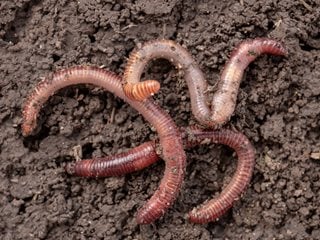CLAY SOIL: WHAT IT IS AND WHEN YOU SHOULD AMEND IT
Testing and working with your clay garden soil to create a healthy growing medium for your plants.Soil is one of the most essential components of gardening. Like other living organisms, plants need air, water, and nutrients to thrive. Soil is the medium that delivers these critical elements to plant roots.
Native soils are comprised of minerals, water, organic matter, and living organisms such as earthworms and beneficial microbes. The primary soil textures are sand, silt, and clay, and often include rock and sand. Native soils come in different textures. Clay soils tend to be finer and "sticky" when wet. Loam, the preferred soil type, contains a combination of clay, silt, and sand. Yet, some plants thrive in rocky, clay, or sandy soil.
The answer to amending clay soil or not depends on whether you are growing permanent landscape trees and shrubs or short-term crops such as vegetables, annuals, and short-lived perennials. Native soil is not “unhealthy” soil, and it’s important to know what your soil contains before adding more of anything to it.
EVALUATE YOUR SOIL
A soil test will indicate if or what your soil may need in order to provide a good environment for plants. There are home soil testing kits available, but it’s best to have at least a baseline sample analyzed at your local extension service or a private soil testing company.
Soil types vary around the United States and can even vary in parts of the same property. To determine your soil type and fertility, take soil samples from different parts of your yard and have them tested for soil type, organic matter content, pH, and nutrient levels. Soil pH affects a plant’s ability to absorb nutrients. Let the lab know what you will be growing and ask for recommendations accordingly.
WHAT IS CLAY SOIL?
Soils that are primarily clay in texture are good at binding mineral nutrients but tend to have poor drainage and aeration. Loamy soils tend to be aggregated into chunks that are ideal for aeration and root growth, but can be easily compacted by machine or foot traffic, especially when wet.
Good management practices before clay soils become compacted are the best way to keep your soil aerated structurally optimal. If your clay soil has become compacted and degraded, the best thing to do is to apply a thick layer of wood chips and let them decompose until it’s workable again. This is a gradual process but well worth the wait.
Adding sand is not a good option, and you can end up with a soil that is closer to concrete than a nice growing medium. Mixing clay (small particle sizes) with sand (large particle sizes) yields a soil that is heavier and denser than either soil alone, with even less pore space and poorer aeration.
If your clay soil is low in organic matter and you have vegetable and flower beds, it makes sense to amend annually with compost. It also makes sense to raise these beds above grade and avoid walking on them or compacting them in any way (a thick layer of wood chips works well to reduce compaction).
VEGETABLE & FLOWER BEDS, SHORT-TERM CROPS
Once you receive your soil test results, you'll have a starting point to determine how much compost to add, if any. If you’re growing vegetables and flowering annuals and perennials, you will likely need to replenish with compost seasonally. Your soil test results will also tell you if any specific nutrients are lacking.
Add compost and nutrients per the lab recommendations, with the ideal fertility content being 10% organic matter by volume. It’s important to note that more is not better, as excess can become a source of non-point pollution if not utilized by the plants.
A top dressing of mulch (fresh wood chips are ideal) gradually increases organic matter, improving soil conditions and moisture levels.
PERMANENT LANDSCAPES
Native topsoils typically have 10% organic matter by volume (approximately 5% by weight), which is ideal for nutrients. However, when you amend soils with materials like compost, sawdust, or peat moss for permanent landscaping, these amendments break down over time, resulting in a settled and compacted landscape.
Based on the soil test for organic matter, it's best to skip amendments when planting and use mulch, such as wood chips, for top dressing. Avoid amending the backfill, as it can cause issues at the root-soil interface when the plant's roots reach the edge of the planting hole.
HOW TO WORK WITH CLAY SOIL
Several of the issues with clay soil can be effectively dealt with by changing the grade (making raised beds, making sure water does not pool, planting on berms or mounds), adding mulch to the surface to prevent crusting, and avoiding compacting the soil with foot or machine traffic.
For new garden beds:
Depending on what you will be growing, adding organics such as compost, leaf mold, mushroom compost, or rice hulls may be beneficial. Make sure to mix it in to the depth roots will be growing into. A spading fork works well for this, and work the soil when it’s not overly wet or dry, it will be much easier. Also, working clay soil when it’s too wet can damage soil structure. Ideally, wait several weeks before planting to allow time for the materials to break down.
This is also a good time to apply organic fertilizers and adjust soil pH if needed. Add garden lime to make the soil more alkaline or aluminum sulfate to increase acidity.
For existing garden beds:
Spread mulch (fresh wood chips are ideal) on the soil surface between plants, it will eventually break down into the soil. Replenish mulch periodically throughout the growing season, and make sure there is a thick, protective layer before winter rains begin.Plant cover crops:
Cover crops with fibrous roots such as rye and clover help break up compacted clay as their roots push into the soil, aiding with aeration and drainage. Plants with deep tap roots such as daikon radish can also be planted in a vegetable garden to penetrate into clay soil.
Sow cover crops in fall after the last vegetables have been harvested. Once cover crops die back in spring, work them into the soil where they will break down to improve clay soil texture and provide rich nutrients for crops in the current growing season.
Attract earthworms:
Earthworms are beneficial organisms that are vital to soil health, eating a wide range of organic matter while they tunnel through the soil. Their activity creates tiny air pockets that help to aerate clay soil, and decompose organic matter. Earthworm excretions, known as worm castings, provide rich nourishment for plants.
Earthworms eat a range of matter in your soil, so adding your own compost and keeping soil moist and cool by laying mulch on the soil surface is helpful. Minimize tilling and avoid using pesticides, which harm earthworms.
Apply gypsum:
Gypsum, also known as soil buster, is a natural mineral composed of calcium sulfate that is used to break up clay soils. It is effective and worthwhile applying where soil salts are high (arid and coastal regions of the U.S.), southeastern U.S, and agricultural areas. However, its effects are short-lived, usually just a few months, and its application can have negative unintended consequences, such and nutrient leaching.
It also does not do well when applied to layered or “mongrel” urban soils, which are often an amalgam of subsoils, imported topsoils, organic matter, and chemical additives. However, your soil test may indicate low calcium levels and the lab may recommend adding it to your vegetable and garden beds.
PLANTS THAT GROW IN CLAY SOIL
Many plants evolved in native clay soil and have adapted to these conditions. Garden plants that are tolerant or will thrive in clay soil include aster, bee balm, birch, black-eyed Susan, clematis, cotoneaster, daylily, dogwood, forsythia, geranium, hawthorn, hosta, serviceberry, viburnum and yarrow. Many prairie grasses also thrive in clay soils, and your local extension office or native plant society are helpful places to look at plant lists for what thrives in your locale.
For more plants, see:
ONLINE COURSE:
THE PERFECT SOIL RECIPE MASTER CLASS
The perfect mix of soil ingredients to build a thriving and productive garden.
Learn how to make the perfect soil mix from Joe Lamp'l, one of the country's most recognized and trusted gardeners in this self-paced online course. Lifetime access, $97
RELATED:
Organic Gardening
Composting 101: How to Compost
Potting Soil 101
Garden Fertilizer 101





